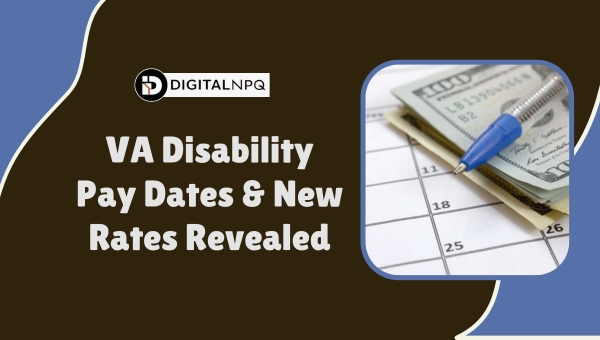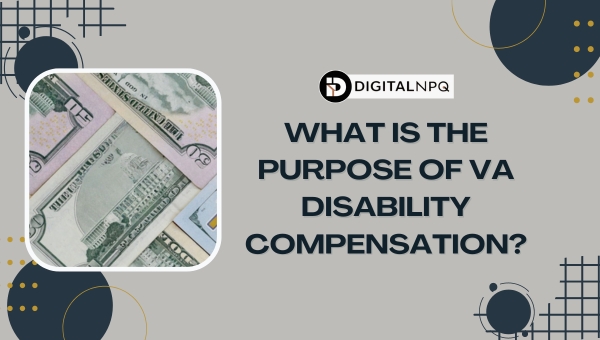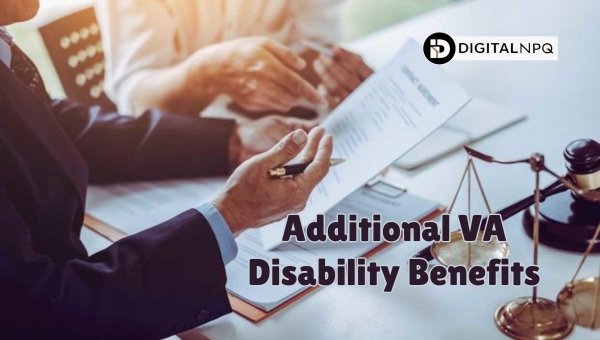VA Disability Pay Dates & New Rates Revealed

Exciting news for veterans! The 2024 VA Disability Pay Dates and new compensation rates have been officially announced, offering clarity and support to those who have served our nation.
Whether you’re planning your finances or simply staying informed, these updates are vital. Read on to discover the new rates and exact payment schedule for the upcoming year.
What is the purpose of VA disability compensation?
VA disability compensation provides financial support to veterans with service-related disabilities and an “other than dishonorable” discharge. This tax-free benefit helps veterans manage the costs associated with their disabilities.

2024 VA Disability Payment Schedule
The payment schedule for 2024 is set to ensure veterans receive their compensation promptly each month. Payments are typically issued on the first business day of the following month.
If the first of the month falls on a weekend or holiday, payments are made on the last business day of the preceding month.
Here is the detailed schedule for 2024:
| Month | Payment Date | Day of Week |
|---|---|---|
| January | Feb. 1 | Thursday |
| February | Mar. 1 | Friday |
| March | Apr. 1 | Monday |
| April | May 1 | Wednesday |
| May | May 31 | Friday |
| June | July 1 | Monday |
| July | Aug. 1 | Thursday |
| August | Aug. 30 | Friday |
| September | Oct. 1 | Tuesday |
| October | Nov. 1 | Friday |
| November | Nov. 29 | Friday |
| December | Dec. 31 | Tuesday |
Veterans should mark these dates to ensure they are aware when their payments will arrive each month.
Also Read: COLA Increase 2024: What You Need to Know
Compensation Rates for Veterans
The 2024 VA disability compensation rates are structured to assist veterans based on the severity of their service-related disabilities.

The increase, effective from December 1, 2023, reflects a 3.2% cost-of-living adjustment (COLA). Below are the detailed compensation rates for various disability ratings.
For Veterans with a 10% to 20% Disability Rating
Veterans with a disability rating between 10% and 20% receive monthly payments, which help cover disability-related expenses.
These rates are straightforward and don’t vary based on dependents.
- 10% Disability Rating: The monthly compensation is $171.23. This amount supports veterans with minor disabilities, ensuring they have some degree of financial aid.
- 20% Disability Rating: Veterans rated at 20% receive $338.49 per month. The increased rate reflects the higher level of disability and the associated costs.
For Veterans with a 30% to 100% Disability Rating
Compensation for veterans with 30% to 100% disability ratings varies and depends on the number of dependents they support.
These payments are more substantial, reflecting the serious nature of higher disability levels.
- Veteran Alone: The following rates apply to veterans with no dependents:
- 30%: $524.31
- 40%: $755.28
- 50%: $1,075.16
- 60%: $1,361.88
- 70%: $1,716.28
- 80%: $1,995.01
- 90%: $2,241.91
- 100%: $3,737.85
- Veteran with Child Only: These rates apply when a veteran is supporting only a child:
- 70%: $1,813.28
- 80%: $2,106.01
- 90%: $2,366.91
- 100%: $3,877.22
- Veteran with Spouse and Child: These rates address veterans supporting a spouse and child:
- 70%: $1,968.28
- 80%: $2,283.01
- 90%: $2,565.91
- 100%: $4,098.87
- Veteran with Spouse Receiving Aid and Attendance: Additional payments are provided to veterans whose spouse requires aid and attendance:
- 70%: $134.00
- 80%: $153.00
- 90%: $172.00
- 100%: $191.14
These comprehensive rates ensure veterans receive adequate support to manage their living expenses and medical needs.
Additional VA Disability Benefits
VA offers several additional disability benefits to provide comprehensive support for veterans and their families.

These benefits aim to address various needs and circumstances beyond basic disability compensation.
Dependency and Indemnity Compensation (DIC)
Dependency and Indemnity Compensation (DIC) is a tax-free monthly benefit provided to eligible surviving family members of veterans who died in the line of duty or from a service-related injury or illness.
DIC helps dependents maintain financial stability after their veteran family member passes away.
Eligible recipients include:
- Surviving spouses who remarried after age 57.
- Unmarried children under 18 or between 18 and 23 if attending an approved educational institution.
- Low-income parents of deceased veterans.
Veterans and Survivors Pension
The Veterans and Survivors Pension programs help support low-income veterans and their families.
Funds from these pensions cover basic living expenses, ensuring a reasonable standard of living.
Eligibility requirements are:
- Veterans must have served at least 90 days of active duty, with at least one day during wartime.
- Veterans must have been discharged under conditions other than dishonorable.
- Income and net worth must be below the limit set by Congress.
Surviving family members also qualify if they meet similar income and service criteria.
Aid and Attendance and Housebound Benefits
Aid and Attendance (A&A) and Housebound Benefits provide extra financial support to veterans who need assistance performing daily activities or are confined to their homes.
Aid and Attendance can be received if:
- Help is needed to perform personal functions like bathing, dressing, or eating.
- The veteran is bedbound due to illness.
- The veteran is in a nursing home due to a mental or physical condition.
- The veteran’s eyesight is limited.
Housebound Benefits apply if:
- The veteran is substantially confined to their home because of a permanent disability.
Special Monthly Compensation (SMC)
Special Monthly Compensation (SMC) is an additional benefit provided to veterans who incurred severe disabilities requiring special assistance.
These payments acknowledge the extra challenges faced by veterans with severe disabilities and help cover the costs of necessary support and medical care.
SMC eligibility includes:
- Loss or loss of use of limbs.
- Blindness in both eyes or in conjunction with any other additional disabilities.
- Loss or loss of use of reproductive organs.
- Severe injuries that result in the need for aid and attendance.
The VA provides SMC in addition to regular disability compensation, ensuring veterans receive the support they need to live comfortably.
These additional VA disability benefits serve to address various specific needs, ensuring comprehensive support for veterans and their families.
Also Read: Capital One Settlement: All You Need to Know
How to Calculate Your Monthly Payment?
Understanding how to calculate your VA disability payment is vital in ensuring you receive the correct amount.
The VA uses a specific method to determine the amount based on your disability rating and other factors.
Disability Rating
The VA assigns a percentage rating from 0% to 100% for each service-connected disability in increments of 10%. This rating reflects the severity of your disability and its impact on your earning capacity.
For instance, a 10% disability rating receives a monthly compensation of $171.23, while a 20% rating gets $338.49. These ratings are crucial because they form the basis of your monthly compensation calculation.
Combined Ratings
If you have multiple disabilities, the VA calculates a combined disability rating. Importantly, this isn’t a simple addition of ratings. The VA uses the Combined Ratings Table to determine the combined percentage.
For example, suppose you have three disabilities rated at 30%, 20%, and 10%. The table first combines 30% and 20%, then applies the next 10% to the resultant figure. This process accounts for the increased severity of disabilities.
Additional Compensation
In certain circumstances, you might qualify for additional compensation. Factors like having dependent children, a spouse receiving Aid and Attendance benefits, or other special needs can increase your monthly payment.
For example, if you have a spouse in need of Aid and Attendance, you may receive an additional $57 to $191.14.
Here’s a simplified table showcasing potential additional compensation for common scenarios:
| Circumstance | Additional Compensation |
|---|---|
| Spouse receiving Aid and Attendance | $57-$191.14 |
COLA Increase
Every year, the cost of living adjustment (COLA) can change your monthly payments. For 2024, the VA disability compensation rates include a 3.2% COLA increase.
This means your compensation sees a slight increase to keep up with inflation and help cover rising living costs.
Final Steps
Once you know your disability rating, combined ratings if applicable, and any additional compensation you qualify for, you can calculate your total monthly payment.
Remember to check the latest VA disability pay charts to ensure accuracy.
How to Apply for VA Disability Compensation?
Applying for VA disability compensation involves several steps. First, confirm you have a service-connected disability.
This condition must have occurred or been aggravated during your military service. Next, gather all necessary documents. These include:
- Military service records
- Medical records
- Evidence supporting your disability claim
Fill out VA Form 21-526EZ, “Application for Disability Compensation and Related Compensation Benefits.” This form is available on the VA website. Submit your completed application online through the VA’s eBenefits portal, by mail, or in person at a VA regional office.
After submitting, the VA reviews your claim. This process includes verifying your service records and medical evidence. Attending a Compensation and Pension (C&P) exam may also be necessary, as it’s crucial for evaluating your condition.
What Should I Do If I Don’t Receive My VA Disability Payment?
If you don’t receive your VA disability payment, it’s essential to act quickly. First, confirm the payment date. Remember, payments are typically made on the first business day of the following month.
If the first day is a non-business day, the payment is made on the last business day of the preceding month. Check your bank account to ensure it’s not an issue on their end.
Next, contact the VA. Use the VA hotline or visit a VA regional office for assistance. You’ll need your claim number or Social Security number handy.
You can also check your payment status online through the eBenefits portal. Verify your direct deposit information, as incorrect bank details can delay payments. If there’s an issue, update your information promptly.
If the issue persists, consider seeking help from a Veterans Service Officer (VSO). They can assist in resolving payment issues and communicating with the VA on your behalf.
FAQs
When Will I Receive My VA Disability Payment For January 2024?
Disability payments for January 2024 will be deposited on February 1, 2024, which falls on a Thursday. Payments are typically made on the first business day of the following month.
How Are Payment Dates Determined?
Payment dates are based on the federal schedule, with payments generally issued on the first business day of the month. If the first falls on a weekend or holiday, the payment is made on the last business day of the prior month.
Is it hard to get 100% VA disability?
Achieving a 100% VA disability rating can be challenging. This rating reflects a complete inability to work or perform daily activities due to service-connected disabilities.
Conclusion
Navigating VA disability pay dates for 2024 doesn’t have to be complicated. With a 3.2% COLA increase and a clear payment schedule, veterans can expect a slight boost in their monthly compensation. This increase ensures that veterans and their families continue to receive the support they deserve without any reduction in benefits.
Understanding these details helps in planning and managing finances more effectively. It’s reassuring to know that the system remains stable and accommodating to the needs of those who’ve served our country.
